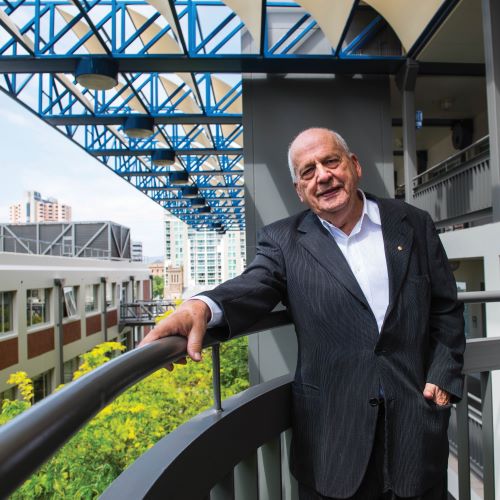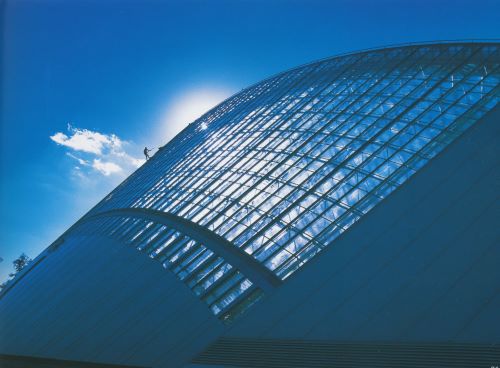
Award winning South Australian architect Guy Maron AM is responsible for some of Adelaide's most iconic buildings, including UniSA's original City West campus and the Bicentennial Conservatory in the Adelaide Botanic Garden.
Yet his body of works also includes significant housing projects, educational facilities and commercial buildings.
A retrospective exhibition Enduring Rationalism: The Architecture of Guy Maron will be held at The Bob Hawke Prime Ministerial Centre, UniSA, from 30 April to 30 May.
The exhibition, shown in collaboration with UniSA's Architecture Museum, will showcase photographs, drawings and writings from Maron's extensive body of work. This includes prizewinning housing at Clovercrest from 1964 and the modern Australian Automobile Headquarters in Canberra, as well as many of Maron's innovative competition entries for significant national buildings.
Maron played a major role in the foundation of UniSA's City West campus, designed to promote interaction and the flow of ideas and knowledge between students and across disciplines.
He spent his early years in Sydney where he studied architecture at the University of Sydney before moving to North America where he lived and studied for four years.
"It's the desire for any young architect to reach to the top of his profession and as new graduates we were inspired by the pioneers of modern architecture such Walter Gropius, Frank Lloyd Wright, le Corbusier and Mies van der Rohe who were leading the world at the time as hero-architects," Maron says.
"Climate had a great deal of influence on me, and it became evident that the concept of shelter was of paramount importance in our environment. My parental home in Batavia (Djakarta) showed an ability to cope with the harshness of the tropical heat and humidity, which was a fortunate influence on me in dealing with the tropical environment where air-conditioning did not exist.
"This early awakening to the environment was of crucial importance to my realisation of the importance of shelter as a prime determinant of architecture. The concept of functionalism and the acceptance of its importance came naturally to me and was never an issue I took for granted during my studies of architecture."

Relocating to Adelaide in 1972, Maron became the principal in the firm Cheesman, Doley, Neighbour and Raffen. His career took off in the late 1980s and he completed his most famous building, the Bicentennial Conservatory in the Adelaide Botanic Gardens in 1989, which went on to win 10 national awards as well as international design awards, including the BHP Architecture of the Decade Award. He also designed the Mount Lofty Lookout in the Adelaide Hills.
Maron has said his architecture comes from 'finding rational solutions to intricate problems' with the credo 'more for less' informing his work, something evident across the photographs, drawings, and writings on display in this exhibition.
He reflects on the world's expanding population and need for new buildings to accommodate new arrivals.
"The world is increasing by a net 200,000 new arrivals every day… meaning that we have a need for 50 million new buildings a year to accommodate our new arrivals. That must be achieved by one million registered architects worldwide. This is not possible," Maron says.
"In my opinion we are due for another major engineering invention of some kind that will bring about a revolution. An attitudinal change will be required as well so that people can divorce themselves from accepted forms of design and construction and embrace a new world, a world that will build houses and housing on an endless belt as for motor cars today and build hundreds of houses per day.
"This engineering invention is overdue by a long time now and is urgent. It will be expected to cause the same revolution as reinforced concrete did."
Enduring Rationalism: The Architecture of Guy Maron is showing at The Bob Hawke Prime Ministerial Centre's Kerry Packer Civic Gallery at UniSA, located on Level 3 of the Hawke Building, 55 North Terrace, City West Campus, from 30 April to 30 May, Monday to Friday, 9am to 6pm. Free entry.






